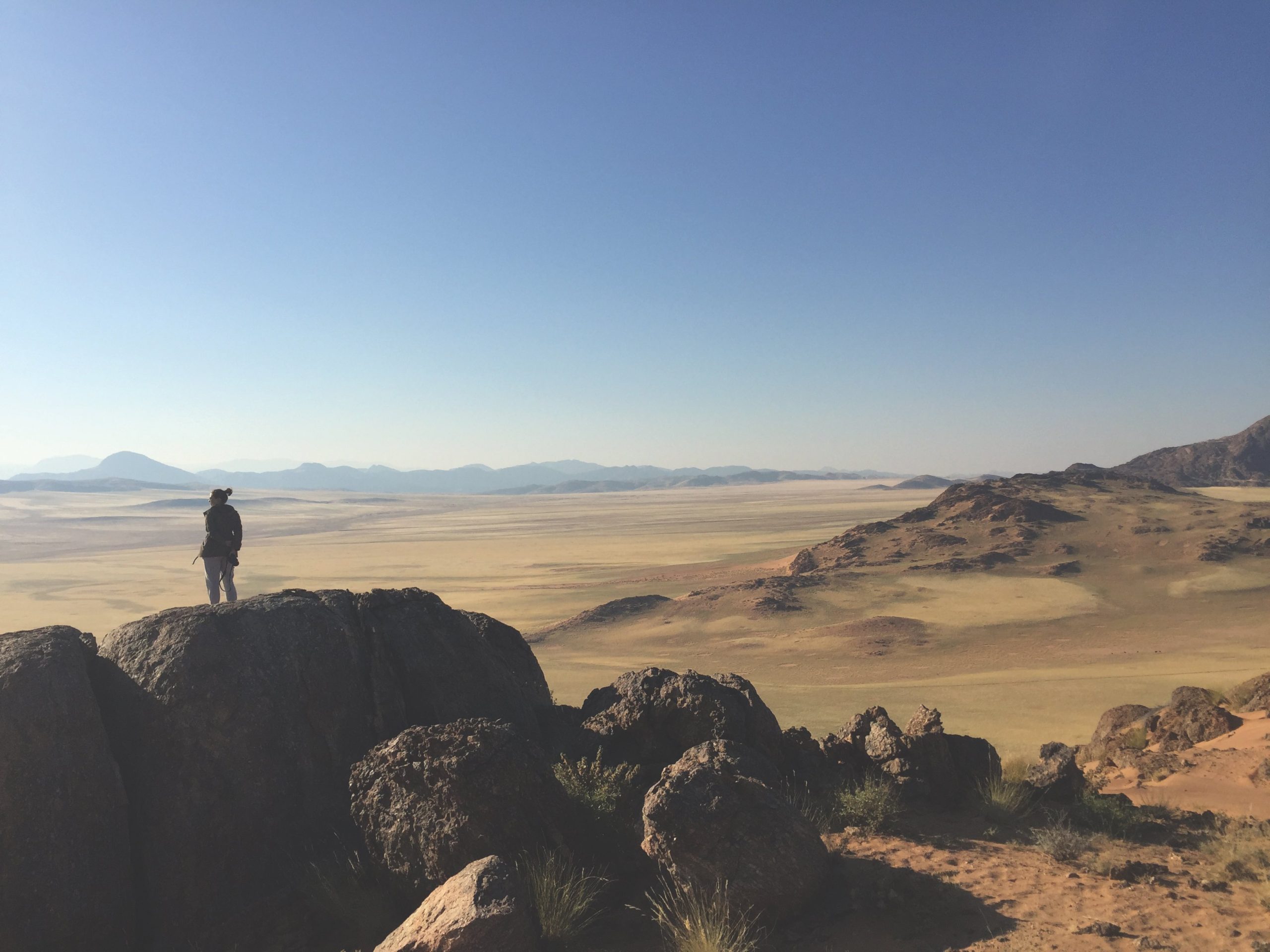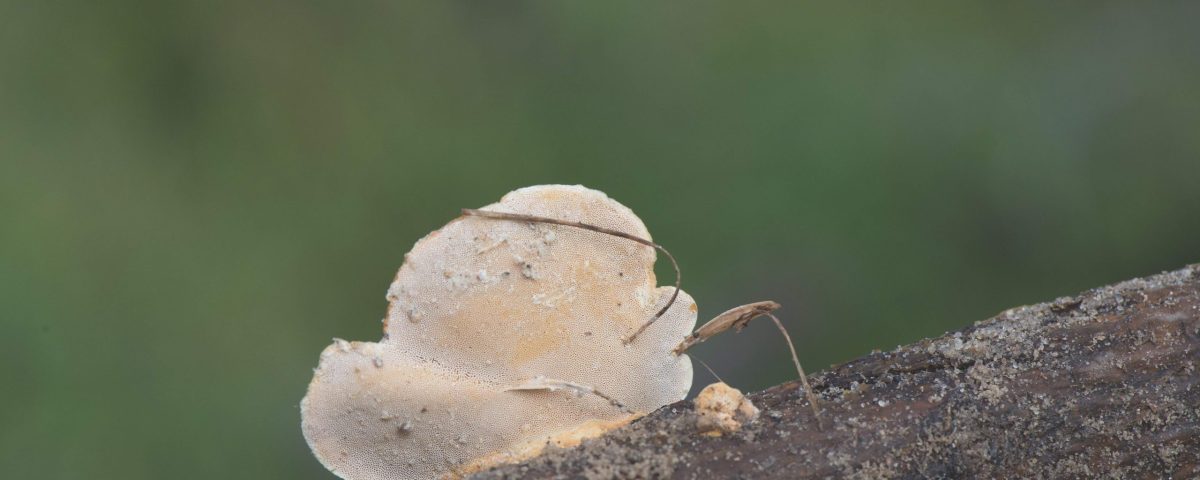
This is My Namibia: Elzanne Erasmus
December 20, 2017
Luxury on the Open Road: Camper-living for the ultimate Namibian self-drive adventure!
January 24, 2018Text: Pompie Burger Photographs: Helga Burger
Mushrooms are magical because they appear and disappear in an instant, and toadstools are the residence of various elves and fairies. This magical “plant” acted as a wonderful substitute to my usual bird watching during a visit to Nambwa Tented Lodge in the Zambezi Region. Having seen very few of my favoured avian pastime goodies, most probably due to the ample amount of rain that fell in the region, the mushrooms replaced the birds (I will add some bird/mushroom recipes at the end of the article). As a result of the limited birding opportunities, my wife Helga had a field-day stopping me every five minutes to take pictures of all the beautiful flowers.
After finishing all the old Beechies* I could find behind the steering wheel, my ear or under the seat, I started looking for lost potato chips, popcorn, biltong, nuts and other delicacies under the carpet and in any other little crevices in the bakkie. I even finished the last cigarette stubs. When this was done and dusted, and I was well fed and smoked, I looked around for other interesting objects and activities I could entertain myself with outside the car. The most amusing and interesting treats were found among the different kinds of dung scattered on the ground in the bush. Mushrooms abundant.
I ended up seeing lots of different mushrooms in various dung heaps. Quite obviously the mushrooms were more interesting and satisfying than the dung because there was the additional advantage of possibly seeing the odd fairy and elf (yes I do still believe in fairies). In the end, my search for fairies was not rewarding, but I will not stop looking, especially at Nambwa, where I am sure I will have success in the near future.
COMMON POISONOUS MUSHROOMS:
1. Amanita phalloides (Death Cap)
2. Amanita pantherina (Panther)
3. Amanita muscarina (Fly agaric)
4. Omphallotus olearius (Copper Trumpet)
5. Hebeloma crustuliniforme (Poison Pie)
6. Paxillus involutus
7. Inocybe species
FUN FACTS
1. All mushrooms are poisonous until proven otherwise
2. Fungi include: mushrooms (visible fungi), toadstools (poisonous mushrooms)
3. A circle of mushrooms is called a fairy ring (single fungi)
4. The largest fungus discovered to date was more than a hectare in size and weighed more than one ton
5. The oldest recorded fungi are more than 8500 years old
6. Lichens are a combination of fungi and algae
7. After consulting another mycologist, Margo Branch, she mentioned that there are probably mushrooms in the Zambezi Region that have not yet been identified. So there is the additional incentive to become famous. Get mushrooming!You get old mushroom hunters and bold mushroom hunters, never both!!Coprinus comatus, the well-known Shaggy Ink CapSchizophyllum commune, known as Splitgill, grows on dead tree trunks.
Fungi are a kingdom of their own, their closest relative being insects. They do not need light to grow, they appear overnight, degrade organic material to supply nutrients to other organisms and reproduce by forming spores. That was the scientific part of the article, so now you can relax. To understand and appreciate fungi one needs to be extremely intelligent with an IQ of way over 150. There are more than 200,000 species in the world, so after my initial enthusiasm of identifying and classifying all the different mushrooms we saw, and reading more than 1000 books and lots of articles, I realised that this is not going to be an easy task for an amateur like me. After consulting Paulina Nmwandingi (UNAM’s mycologist), and reading another hundred articles and a few more books, I believe I have finally mastered the art of mushrooming.The first and most important point to understand is that all mushrooms are fungi but all fungi are not mushrooms. All men are humans, but all humans are not men. Here is the basic difference: mushrooms are fungi bearing a cup attached centrally to a stalk and they are visible without a microscope. The shape, size and colour of the fruiting body (visible partly above the ground) are important elements to take note of when attempting to classify them, as well as the upper and bottom surface of the cap. The stem is also important especially in identifying some of the poisonous species. Unfortunately, the colour, shape and size change with age, making identification even more of a challenge. Their growth medium is similarly important. The most common and important being dung, dead wood, humus, trees, grasslands, animal remains and termite heaps. Yet another classification divide in mushrooms is whether they are edible, non-edible or poisonous. As one can see, there are various important criteria signifying the difficulty in identifying and classifying the various fungi. If you want to identify a fungus/mushroom, it is important to know all of these above-mentioned entities and even more important, to find a good mycologist to help you.Edible mushrooms are defined as those that when eaten cause no health disorder or death, provided they have been properly cooked. Poisonous mushrooms are dangerous because of toxins (this might be from the spores, fruit or the stem). There are four clinical symptoms associated with ingesting poisonous mushrooms: cellular destruction and/or liver failure, gastric, nerve or hallucinogenic symptoms. Cellular poison is the most lethal and results from the Amanita species (liver cell destruction) and Gyromitra species (red cell destruction). The most useful poisonous mushrooms are the ones that cause hallucinogenic symptoms (extending the limits of perception). Unfortunately, they are not available in Namibia.Enough of the bad news, the advantages from these beauties are multiple. Apart from degrading the organic material and a beneficial relationship with plants and animals in their natural environment, they play an important role in humans. Fungi are used in producing yeast (bread dough), alcohol (beer and wine), medicine (antibiotics, anti-depressants, cortisone) and bleach. Obviously, the most important advantage is the contribution fungi have made to the human diet. My personal knowledge of edible mushrooms used to start and end with Omajovas and !nabbas (Kalahari truffles). Maybe I can even expand and add the mushrooms I enjoyed at the Sardinia Restaurant on various occasions. Both Omajovas and !nabbas are mushrooms, but they are very different. The one grows underground (!nabba), while the other only grows on termite mounds (omajova). They belong to different suborders of mushrooms: Omajovos are Basidiomycotina and !nabbas are Ascomycotina. Without going into too much scientific dung, Basidiomcotinas’ spore dispersal takes place via wind, while Ascomycotinas disperse by way of decaying fruit where the spores spread into the soil, or are eaten by animals and defecated elsewhere.Omajovas are family of the Termitomyces umkowaan known as I’kowe or beefsteak mushroom which occurs in South Africa. The scientific name of Namibia’s species is Termitomyces reticulatus. After good rains, these mushrooms appear in groups on termite mounds at the beginning of summer. They can often be bought along the road around this time. As most Namibians will know, they can get quite large, up to 30 centimetres in diameter, and are more firm than your average grocer mushroom. The different ways of enjoying them vary from eating them raw to preparing them like steak (see Antoinette De Chavonnes Vrugt’s cookbooks My Hungry Heart or Life on a Table for recipes).
!nabbas (Terfezia pfeilli), by contrast, are much more difficult to find because they grow underground, they are not sold along the road (too good to be true and too good to sell) and appear in late summer in Kalahari sand. Jean van Rooyen says: “Truffles appear within 61 days after rain”. Robyn Dixon said: “Truffles look like desiccated donkey dung”. The term !nabba is derived from the Nama word t!a-ba which means ‘something brown’. When cut open the fresh is glistening white, with a texture of soft cheese. Some people claim that the Namibian truffle is not as tasty as the European truffle, but that sounds to me like a very subjective opinion. The truffles grow near clumps of Aristida grass and close to Candlepod Acacias. Unfortunately, nobody in Namibian has taught pigs or dogs how to find them, although apparently, one can find them by watching baboons, jackals and meerkats (sounds more exciting) because they are usually the first to locate them.In all probability, the use of wild mushrooms as food began with prehistoric man. There is little doubt that early man worked on a trial and error basis, in the end, the tribes became smaller, and eventually, the survivors became fat as they familiarised themselves with the edible and inedible plants. The most poisonous mushrooms are the Amanitas and Parasols. All the Amanitas have a ring and a volva. The Parasols have white gills, no volva, but a ring. Mushrooms are not only for eating though. They are a wonderful addition to the many interesting things one can explore on a bush excursion apart from the usual Big Five. Once you start enjoying the flowers, insects, birds (obviously), trees, frogs, spiders, reptiles, fish, mammals and even fungi – or if really bored, different geological formations – you will be blown away by everything nature has to offer. Then you can go home after a week satisfied, not even complaining about not having seen the BFF (Big Freakin’ Five). On our last visit to Nambwa, we identified over 30 different mushrooms over a period of four days. At a time when there was magic and superstition, fairies and their mushroom homes were plentiful, “but as the magic waned, so did the fey”.
This article first appeared in the Spring 2017 edition of TNN.


